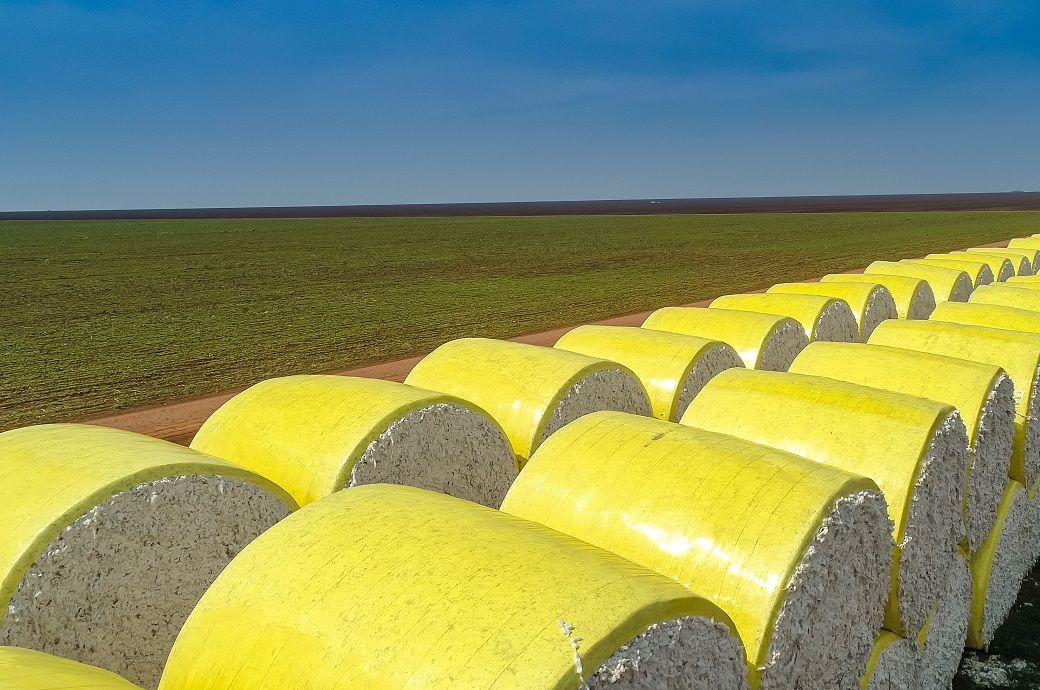
The A Index moved parallel to NY/ICE futures. Values fell below 90 cents/lb near the end of October but surged over 100 cents/lb in early November, Cotton Inc said in its Cotton Market Fundamentals & Price Outlook of November 2022.
Chinese prices represented by the China Cotton Index (CC 3128B) decreased in late October and into November. After holding to levels between 98 and 100 cents/lb for much of the past month, prices eased to 96 cents/lb by early November. In domestic terms, values traded between 15,500 and 16,000 for much of the past month but decreased to 15,400 RMB/ton by early November. The RMB weakened against the USD over the past month, from 7.10 to 7.30.
Indian spot prices (Shankar-6 quality) decreased in a comparatively uniform fashion over the past month, with values falling from 110 to 99 cents/lb between early October and early November. The decline was from ₹71,000 to 64,500 per candy in domestic terms. The INR was steady near ₹82 per USD over the past month.
Pakistani prices also decreased in a relatively linear manner, falling from 102 to 90 cents/lb over the past month. In domestic terms, prices dropped from 18,300 to 16,500 PKR/maund. The PKR weakened against the USD from 217 to 221 PKR/USD.
The recent volatility in NY/ICE futures has been attributed to various factors, including short covering in the futures market and import interest from China. The steep increases in early November can also be interpreted as a sensitivity to potential increases in demand for US exports. US stocks are low this crop year, and US shipments will have to be rationed by prices if the appetite exists from the demand side.
However, there are questions whether there will be enough demand to sustain prices at higher levels. At each stage of the supply chain, there have been reports of increases in inventory and order reductions. These reports of inventory accumulation precede what is expected to be a global economic downturn in 2023.
Chinese government policy related to imports is uncertain, but China accumulated significant stocks at gins last crop year, and that cotton remains available. In addition, the Chinese crop is expected to be larger than last year, and Chinese prices are currently lower than the export offers represented by the A Index (traditionally, the CC Index is 15-20 cents/lb higher, but it is currently 8 cents/lb lower than the A Index).
This indicates that global export prices are not attractive in China. Higher external prices should be a headwind for Chinese cotton fibre and yarn imports. Lower Chinese yarn imports imply lower mill demand for yarn exporters like Vietnam. In turn, Vietnam is a major importer of cotton fibre, and lower Vietnamese spinning demand suggests lower fibre import demand from that important market. Lower import demand from China may eventually weigh on global export prices.
Lower prices will make cotton less competitive for acreage in 2023-24. Price ratios for 2023-24 futures market prices for cotton over corn and soybeans are among the lowest in the modern era. The threat of lower acreage next crop year may provide some support for the market when projections are released around the start of the calendar year.
However, the effects of any reductions in acreage and production could also be delayed. For cotton prices to increase, it needs to have buyers willing to bid up values. It is unclear when that demand might surface with the recent accumulation of inventory throughout supply chains and slowing global macroeconomic conditions. The latest forecasts from the International Monetary Fund (IMF) suggest that all of the world’s largest economies will simultaneously experience slower-than-average growth in 2023, the report added.
Recoveries follow recessions and both times that cotton prices reached sustained levels over 100 cents/lb over the past couple decades (2010-11 and 2020-21) coincided with recoveries that came after the financial crisis and the COVID-driven recession. An eventual recovery from the expected economic downturn in 2023 may enable price increases at some point, but the full effects of inflation, rising interest rates, and inventory accumulation may need to be digested first.
ALCHEMPro News Desk (KD)
Receive daily prices and market insights straight to your inbox. Subscribe to AlchemPro Weekly!